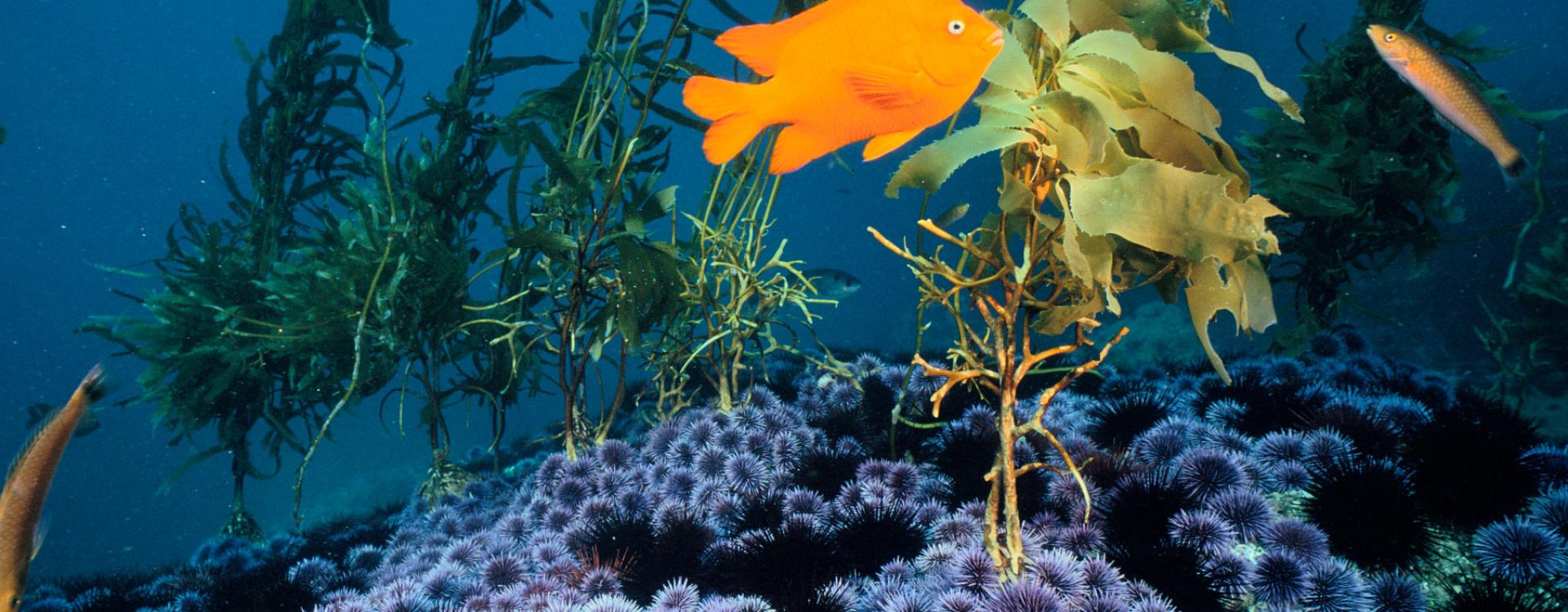
An orange Garibaldi and several señorita fish swim past a mixed group of red and purple sea urchins off the coast of California. Photo Credit: Ron McPeak
A new study by UC Santa Barbara Katrina Malakhoff and her advisor, Robert Miller highlight that we shouldn’t necessarily adopt simplistic management approaches like smashing sea urchins to save kelp forests.
UC Santa Barbara researchers Katrina Malakhoff, a doctoral student in UC Santa Barbara’s Interdepartmental Graduate Program in Marine Science, and her advisor, research biologist Robert Miller examined urchin populations inside and outside marine reserves, where protection from fishing should have enabled urchin predators to rebound and control their populations. But instead of finding fewer urchins, they found that one species was unaffected by the reserves, while the other flourished. Their work was supported by the National Science Foundation’s Long-Term Ecological Research program, and results appear in the Proceedings of the Royal Society B.
These findings also highlight that we shouldn’t necessarily adopt simplistic management approaches like smashing sea urchins to save kelp forests,” Miller added.
Other factors influence how much kelp urchins eat, aside from their density.